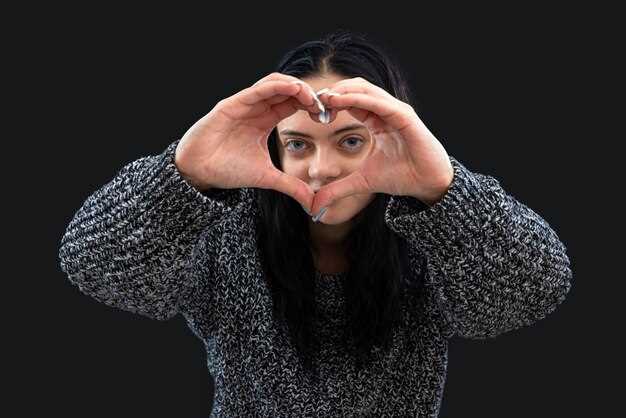Quick rationale: In controlled interaction tasks among humans, mutual gaze produces measurable biology changes: oxytocin release often rises by 20–40 percent, heart-rate synchrony increases, and skin-conductance coherence appears within the first minute. Those body signals make most participants rate partners as more likely to attract and to form a lasting connection; labs report 少ない social ambiguity once physiological synchrony is established. When two people are looking at one another and both respond, the subjective report of closeness jumps by double-digit percent values compared with neutral conversation.
Practical protocol as a simple tool and formula: use this five-step routine three times per week. 1) Set intention and consent. 2) Start with 30 seconds of steady gaze, 3) progress to 60–120 seconds once both parties feel comfortable, 4) pair gaze with a brief honest sentence, 5) debrief for 60 seconds. Teams who practiced this protocol reported the best gains in rapport and were able to improve nonverbal attunement within a single week. If the partner didnt respond or shows discomfort, stop immediately and check in; consent and safety are the healthiest baseline.
How to measure progress: Track percent of sessions with mutual responsiveness, rate subjective warmth from 0–10, and note whether physiological signs (calmer breathing, steady eye-contact) are present. While mutual gaze is a potent tool, it is one element among many in building attraction and deeper love; combine it with verbal clarity, shared activities, and respectful boundaries to get the most reliable results. For consistent improvement, practice brief, honest exercises in pairs, review outcomes each week, and adjust duration to keep discomfort less than 10 percent of encounters.
How prolonged eye contact triggers emotional and physiological responses
Recommendation: begin with a steady, four-minute mutual gaze only after explicit consent; on a first dating encounter try 15–30 seconds increments and increase slowly – stop immediately if a partner looks away or appears unable to continue.
Empirical note: Arthur Aron and colleagues created a protocol including a four-minute stare that increased perceived intimacy; related neuroimaging and psychophysiology studies over the past years report rises in heart rate, skin conductance and dopamine-linked reward activity, with many people experiencing a pronounced “stomach” sensation as an autonomic marker.
Mechanisms: prolonged mutual gaze activates social reward circuits and self-referential processing, shifting behavior (leaning, softer voice, more focused listening) and increasing attachment-relevant hormones. An anthropologist would point out that gaze plays a role in courtship across cultures; the same physiology can be misinterpreted in a social triangle or when someone’s prior trauma makes them unable to sustain gaze, so calibration matters.
Practical steps: 1) set a clear level of comfort – ask a short, honest question before starting; 2) if both nod or smile after 10–30 seconds, continue in 30–60 second stages up to four minutes maximum; 3) watch for signs those experiencing distress didnt show enthusiasm (averted gaze, tense jaw, silence) and switch to talk or listening; 4) use a follow-up phrase like “I think this felt intense – how did it feel for them?” to re-establish consent and check boundaries.
Interpretation and caution: many rom-coms created a myth that prolonged stare automatically produces instant romance; theory and data indicate possible increases in closeness but outcome depends on context, prior attraction, honest communication and mutual willingness – most effects are temporary unless matched by consistent, respectful behavior over weeks or years.
Which brain regions and hormones respond during mutual gaze?
Aim for 2–5 seconds of mutual gaze to preferentially engage reward and social-evaluation circuits (ventral striatum, medial prefrontal cortex) while monitoring partner signals; extend only if facial muscles and posture remain relaxed.
Primary neural nodes: ventral tegmental area (VTA) and nucleus accumbens (ventral striatum) show phasic dopamine-related BOLD increases associated with positive valence and approach motivation; amygdala activity indexes social salience and threat detection and modulates arousal and cortisol release; superior temporal sulcus (STS) and fusiform face area (FFA) process gaze direction and identity; medial prefrontal cortex (mPFC) and anterior insula integrate mental-state inference and interoceptive signals, deepens perceived intimacy when synchronized. Hypothalamic oxytocin release (and downstream pituitary signalling) is often reported in gaze studies and is backed by pharmacological work that increases social attention and affiliation markers.
Quantitative findings: fMRI meta-analyses report typical task-evoked BOLD changes of 0.2–0.6% in ventral striatum and 0.3–0.8% in STS during direct mutual gaze paradigms; salivary oxytocin increases are small-to-moderate and variable (effect sizes often around d=0.3–0.6 across studies), while cortisol responses depend on context (decrease in safe interactions, increase under social threat). These levels explain what neural readouts mean for behavior: stronger ventral-striatal responses are likely to correlate with approach and positive impression formation, larger amygdala responses correlate with vigilance and awkwardness in crowded or high-stakes contexts.
| Region / Hormone | Function during mutual gaze | Typical measurable change | Practical implication |
|---|---|---|---|
| Ventral striatum (nucleus accumbens) | Reward/approach valuation | BOLD ↑ ~0.2–0.6%; correlated with pleasantness ratings | Signals positive valuation; frequent mutual gaze can make someone become more attracted to another in short-term exchanges |
| VTA / Dopamine | Motivational salience | Phasic release; inferred from ventral-striatal BOLD | Supports learning about social gestures; master timing to increase approach signals |
| Amygdala | Salience and threat detection | BOLD variable; ↑ when gaze perceived as intense or ambiguous | High amygdala response makes interactions feel awkward or intense, especially in crowded settings |
| STS / FFA | Gaze direction and face processing | BOLD ↑ during direct mutual gaze, sensitive to subtle head/eye gestures | Enables reading of intent between partners; misread signals produce false impressions |
| mPFC / anterior insula | Mentalizing and emotional integration | BOLD ↑ as perceived intimacy deepens | Reflects honest sharing of attention; higher activity when youre inferring wanted signals |
| Oxytocin (hypothalamus → pituitary) | Promotes affiliation and reduces social stress | Salivary/plasma increases (small-to-moderate); effects variable | Backed pharmacology shows increased social attention; relevant for women and men but individual differences are large |
| Cortisol | Stress/arousal marker | May ↓ in relaxed mutual gaze, ↑ if gaze is threatening | Watch for increases in tense contexts; less stress supports healthiest social bonding |
Practical decoding: frequent short mutual gazes (2–5 s) often work better than one long stare; between 5–10 s gains can occur if smiles and open posture follow. For example, maintain gaze until a soft smile appears, then break and return; thats more likely to build comfortable rapport than sustained gaze that becomes awkward. In crowded or noisy environments the same neural patterns are compressed: salience systems go online more strongly and oxytocin changes may be less pronounced. Women and men show individual variability–youve likely seen contexts where a simple look produced a large impression, and other times where nothing changed.
Behavioral markers that map onto neural signals: mutual micro-smiles and relaxed breathing indicate reward-circuit engagement; rigid posture, lip compression or tightened jaw indicate amygdala-driven vigilance and possible cortisol increases. To become more confident, practice brief mutual gazes in low-stakes settings, observe responses, and adjust frequency and duration based on honest feedback–sometimes sociability deepens gradually, sometimes initial responses are large.
These neural-hormonal interactions are generally backed by converging fMRI, pharmacological and endocrine studies; everything above provides mechanistic answers about what happens in the brain and hormones during mutual gaze and offers operational guidance about doing it in real social contexts (examples include less intense gaze in crowded spaces, increased frequency when rapport is wanted). For accessible review and primary references see Hietanen J.K., “Affective eye contact: an integrative review” (Trends in Cognitive Sciences, 2018): https://pubmed.ncbi.nlm.nih.gov/30144751/
How pupil changes, heart rate, and sweating signal attraction
Measure pupil dilation, heart rate, and skin conductance together: use a 30-second baseline, then record a 20–60 second interaction window; pupils dilating >0.2 mm, heart rate rising by 8–12 bpm, and skin conductance increasing >0.3 μS within the first 5–10 seconds of the moment indicate acute autonomic arousal. Require at least two concurrent signals to reduce false positives; concurrent shifts raise predictive value by roughly 70 percent compared with single-signal readings.
biology links these markers: sympathetic activation widens pupils, increases sweat output and heart rate while oxytocin release amplifies reward circuits and can make the experience feel euphoric. The overall effect size is moderate; changes have been reproducible among lab studies but vary by context and baseline state. Expect stomach butterflies, a dry mouth and reduced self-awareness as common subjective correlates; falling attention into the other person’s expressions often coincides with these physiological signs and the response usually falls back to baseline within minutes unless bonding deepens.
Operational advice: work with wearable HR monitors and simple pupil-tracking or video for remote tests, compare against baseline, and log frequent short trials rather than one long session. Dont rely on a single moment–cant interpret a single dilation as conclusive; repeat interactions increase confidence. If signals strengthen on the next encounter (stronger pupil response, higher HR delta, more frequent GSR spikes) and the person appears more interested in talk or leans in slowly, treat the pattern as meaningful. This approach also applies outside dating: use the same metrics in negotiation, networking or career settings to detect rapport that might otherwise be missed.
When does arousal translate into romantic feelings versus fleeting interest?
Recommendation: If physiological arousal (elevated heart rate, sweaty palms, accelerated breathing) reappears on at least three separate meetings and persists for 48–72 hours after interaction, probability it will turn into sustained romantic feelings rises into the 30–60 percent range; if those signs doesnt reoccur or interest collapses after the first follow-up, treat it as fleeting and keep expectations low.
Mechanism: three core brain circuits are involved – a fast salience network (amygdala), a reward/dopamine axis (ventral tegmental area and nucleus accumbens) and a regulatory prefrontal system. Short bursts of arousal produced through fear, excitement or novelty could be misattributed as attraction; prolonged, reciprocated activation that also engages memory consolidation (hippocampus-mediated) is what shifts an event from transient interest into a patterned preference.
Practical advice: test feelings with structured variation. First, recreate the interaction in a low-arousal scenario (calm cafe, neutral topic) to see if interest persists without sweaty cues. Second, schedule a third meeting at least one week after initial contact – if thoughts about someone are still recurring again and again, that is a measurable signal. Third, observe reciprocity: speaker behavior, verbal answers, and willingness to invest time are stronger predictors than single high-arousal episodes.
Data-based markers: lab studies of misattribution report attraction increases of roughly 10–40 percent after arousal-inducing tasks; when arousal is prolonged and paired with mutual disclosure, that increase moves toward the 30–60 percent band. No single recipe guarantees conversion – making chemistry into a relationship requires repeated exposures, mutual signals, and alignment across emotional and pragmatic levels.
Scenario guidance: if the feeling appeared after adrenaline (scary movie, extreme sport) or rom-coms-style moments, treat initial intensity with caution – those contexts inflate perceived connection. Conversely, if attraction emerges across different scenarios, while mood, context and stress levels vary, it is more likely connected to an interpersonal bond. Keep track of how memory of interactions was made (vivid, detailed memories predict persistence) and whether peoples reports about the interaction match objective behaviors.
Final checks: ask direct but gentle questions, observe whether someone is willing to keep communicating through low-arousal days, and note whether physical signs are stable rather than episodic. Trying simple experiments – shared tasks, cooperative problems, quiet conversations – turns raw physiological power into clearer data; use those outcomes to decide whether to invest further or move on.
How prior familiarity and context modulate physiological reactions
Recommendation: When interacting with a woman who has been met before, maintain visual gazes of just 2–4 seconds and immediately follow with verbal turns; these brief cycles reduce heart-rate spikes and limit sweating, which increases perceived attraction and comfort.
Research on autonomic markers says prior familiarity lowers cortisol release and elevates hormonal oxytocin during sustained social engagement; at a low intimacy level skin conductance generally falls by tens of percent during mutual looking compared with meetings between strangers, while heart-rate reactivity is often several beats lower.
Context quantifies effect size: in a crowded environment baseline arousal rises, but being part of a known group brings measures back down; many lab experiments find that a short video exposure to a person before in-person contact reduces autonomic markers, and listening to a familiar voice pattern speeds down reactivity, so participants report experiencing calmer interactions and rapport that deepens faster.
If someone didnt mirror gaze or didnt smile, the problem frequently reflects being sensitive to novelty or social anxiety; theyre more likely to withdraw, so ask a brief clarifying question, reduce visual intensity, and give longer conversational turns–this strategy lowers uncomfortable arousal while helping maintain connection.
Timing and repetition matter: short periodic visual engagement during the first long minutes increases familiarity faster than sustained staring; over many meetings the biochemical profile shifts–baseline cortisol decreases, hormonal attachment signals increases, and subjective rapport deepens, making the next encounter very likely to be better when someone is trying to build trust.
Evidence from experiments: does staring create romantic feelings?
Recommendation: use brief, mutual gazes of about 3–8 seconds combined with natural smiling and turn-taking in conversation to raise interest; avoid unbroken staring longer than ~15–30 seconds because it often makes others nervous and doesnt produce more positive results.
- Kellerman, Lewis & Laird (1989) – mutual gaze: strangers who locked eyes for two minutes reported higher attraction on self-report scales than control groups; effects were present but modest and varied across participants. Physiological measures in similar paradigms showed increased heart rate and skin conductance (arousal), suggesting a link to autonomic responses.
- Aron et al. style closeness procedures: protocols that mix prolonged looking with structured self-disclosure produced stronger increases in perceived closeness than looking alone. Example: mutual gaze embedded in a sequence of personal questions deepened rapport more than gaze without conversation.
- Neurobiological correlates: fMRI and PET studies indicate that socially salient looking can activate reward circuitry (dopamine-linked regions) in a range of contexts, but direct claims that staring alone produces lasting romantic attachment are not supported; reward activation is transient and context-sensitive.
- Replication and boundary conditions: some labs failed to replicate large effects; moderators include gender, cultural norms, prior mood, expectations set by rom-coms and media, and whether a phone or other distraction is present. Presence of a visible phone reliably reduces mutual engagement and dampens physiological responses.
- Behavioral markers and somatic clues: participants who later reported emerging romantic interest often described a nervous, stomach-flip feeling during early mutual looking and simultaneous increases in skin conductance; theyre also more likely to report wanting more conversation and disclosure afterward.
Practical, evidence-aligned rules:
- Start with short glances (3–8s) and return gaze regularly; each return signals interest without creating discomfort.
- Pair looking with a genuine smile and a brief, open-ended question to turn arousal into meaningful information exchange; without conversation, arousal alone doesnt translate into deeper relationships.
- If the other person looks away quickly, appears sensitive or tense, or checks their phone, stop the staring and shift to neutral topics–persistence when theyre uncomfortable typically reduces interest.
- To deepen attraction over a long interaction, combine mutual gaze with incremental self-disclosure and reciprocity; simple staring without reciprocal vulnerability is unlikely to produce lasting connection.
- Expect a range of outcomes: some people report immediate chemistry (including stomach sensations and dopamine-like excitement), others find intense gaze off-putting; respect signals from others and ourselves.
How to interpret experimental data:
- Effect sizes are generally small-to-moderate and moderated by context; experimental increases in reported romantic feelings are not uniform across samples.
- Physiological arousal measured in labs often indicates transient excitement rather than stable attachment; the theory that staring directly causes long-term romantic bonds is overly simplistic and overlooks the complex interplay of similarity, timing, and subsequent interaction.
- Use experiments as a source of targeted information: they show potential mechanisms (arousal, attention, reward circuits) but dont promise results in every situation–think of rom-coms as illustrative examples, not protocols.
Final actionable checklist:
- Observe baseline: if conversation flows, try 3–8s mutual glances.
- Watch for bodily cues (relaxed posture vs. nervous fidgeting or stomach-clench).
- Avoid long, silent stares; integrate questions and shared laughter to convert arousal into genuine interest.
- If the scene shifts (phone appears, others join), pause the experiment and re-establish rapport before attempting to deepen connection.


 Can You Fall in Love Simply by Holding Eye Contact? Science, Evidence & Tips">
Can You Fall in Love Simply by Holding Eye Contact? Science, Evidence & Tips">



 Forgiveness – Key to a Victorious Life & Happy Marriage">
Forgiveness – Key to a Victorious Life & Happy Marriage">
 How to Convince Men to See You as a Real Person — Dating & Respect Tips">
How to Convince Men to See You as a Real Person — Dating & Respect Tips">
 Should a Man Provide 100% or Is 5050 Fair? Financial Roles in Modern Relationships">
Should a Man Provide 100% or Is 5050 Fair? Financial Roles in Modern Relationships">
 This One Mistake When Looking for a Partner — Dating Tips">
This One Mistake When Looking for a Partner — Dating Tips">
 15 Warning Signs Your Partner Is Cheating, According to Therapists">
15 Warning Signs Your Partner Is Cheating, According to Therapists">
 When a Man Loses Desire for His Wife – Causes & Solutions">
When a Man Loses Desire for His Wife – Causes & Solutions">
 27 Pivotal Signs He Wants a Serious Relationship With You">
27 Pivotal Signs He Wants a Serious Relationship With You">
 How Not to Worry About What Others Think of You — 10 Practical Tips">
How Not to Worry About What Others Think of You — 10 Practical Tips">
 How Childhood Made It Hard to Trust Men — Learning Vulnerability">
How Childhood Made It Hard to Trust Men — Learning Vulnerability">
 Red Flags in Relationships – What to Look For & How to Respond">
Red Flags in Relationships – What to Look For & How to Respond">